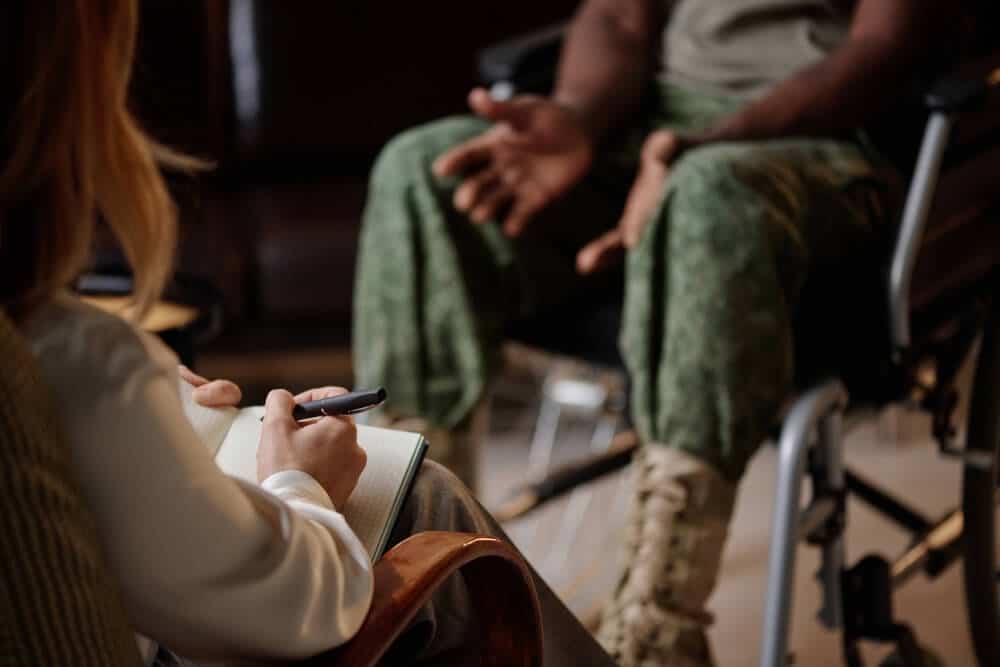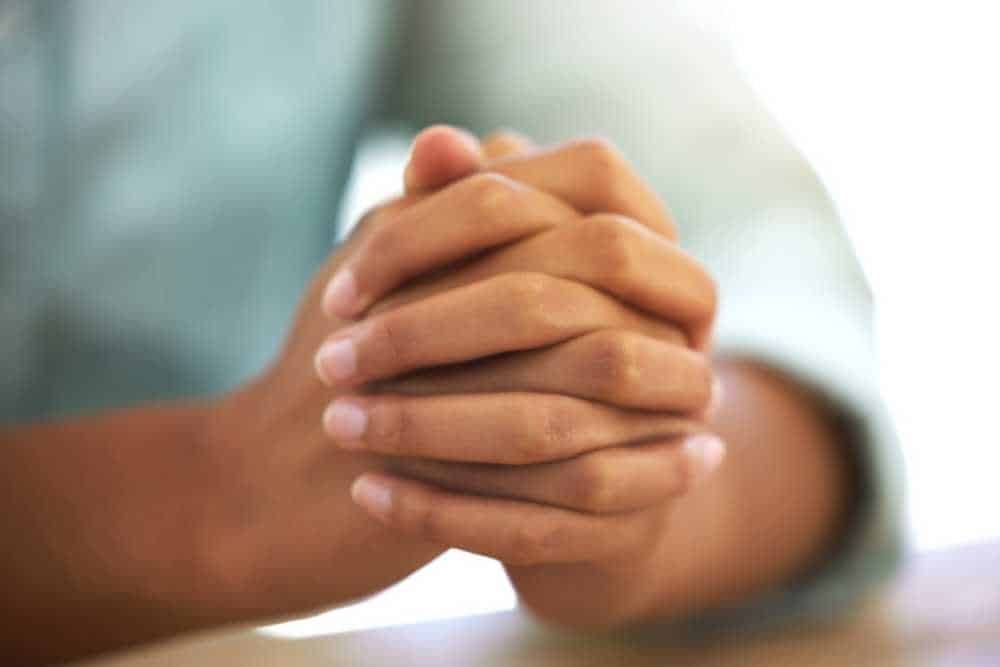We Accept Most PPO Insurance Policies
All calls and submitted forms are 100% confidential. Insurance could completely cover the cost of treatment


Mental health care is a critical component of overall wellness, and accessing professional support at our Reseda medical clinic offers numerous benefits. Professional therapists can provide accurate diagnoses, evidence-based treatments, and personalized care plans that address each patient’s specific mental health needs.
These mental health services near Los Angeles may include therapy, medication management, and ongoing support that can significantly improve the quality of life for those experiencing mental health challenges. Seeking care at a professional clinic ensures treatment is integrated with other health services, creating a comprehensive approach to wellness.
Utilizing local mental health services also removes many barriers to consistent care for residents of Reseda and surrounding areas. Proximity reduces transportation challenges, allows for more flexible scheduling, and often creates a sense of community that can enhance the therapeutic relationship.
Professional care through our Reseda medical clinic for mental health also provides access to a network of specialists who understand the unique needs and resources of the local community. Taking this critical step toward mental wellness not only benefits the patients but strengthens the community as a whole by reducing stigma and normalizing mental health as an essential part of healthcare.

Identifying when someone needs professional mental health help often involves recognizing persistent changes in their behavior, emotions, or thinking patterns. Warning signs may include withdrawing from previously enjoyed activities or relationships, experiencing extreme mood swings, having difficulty functioning at work or school, or changes in sleeping or eating habits.
Other significant indicators of needing mental health treatment include persistent feelings of sadness or hopelessness, excessive worry or fear, difficulty concentrating, substance misuse, thoughts of self-harm or suicide, or unusual beliefs or behaviors that interfere with daily life. When these symptoms persist for weeks and significantly impact someone’s ability to function, it’s typically time to seek professional guidance.
The presence of physical symptoms without clear medical causes can also signal mental health concerns, as the mind and body are closely connected. These might include unexplained headaches, digestive issues, or chronic pain.
If someone has experienced trauma or significant life changes or has a family history of mental health conditions, they may benefit from professional support even before severe symptoms emerge. Seeking help is a sign of strength, not weakness, and early intervention typically leads to better outcomes. Professional mental health providers like Moment of Clarity can offer proper assessment, diagnosis, and evidence-based treatments.
Helping a loved one experiencing declining mental health requires a delicate balance of compassion and boundaries. Start by creating a safe, judgment-free space for conversation where you listen more than you speak, showing genuine concern without rushing to offer solutions.
Rather than making general statements, express your observations about specific changes you’ve noticed in their behavior or mood. Offer to assist them in researching mental health centers in Reseda or even accompanying them to initial appointments if they’re open to seeking help. Throughout the recovery process, educate yourself about their specific challenges while remembering that your role is to support, not to diagnose or treat their condition.
While supporting your loved one, it’s equally important to maintain your own well-being. Set realistic expectations about what you can provide, and recognize when professional intervention is necessary, especially if they express thoughts of self-harm. Encourage them to establish routines that support mental health, such as regular sleep schedules, physical activity, and social connection, while gently celebrating minor improvements. Remember that recovery rarely follows a straight line, and patience is essential.

Modern mental health treatment offers several evidence-based approaches that have proven effective for various conditions. Cognitive Behavioral Therapy (CBT) is one of the most researched and widely applied therapies. It helps patients identify and change unhelpful thought patterns that affect their emotions and behaviors.
For trauma-related conditions, approaches like Eye Movement Desensitization and Reprocessing (EMDR) and trauma-focused CBT provide specialized pathways to healing. Dialectical Behavior Therapy (DBT) combines elements of CBT with mindfulness practices and is particularly effective for emotional regulation challenges.
The most effective approach depends on specific conditions, personal preferences, and circumstances. However, many patients find that combining therapies, including supportive activities like exercise, nutrition, and social connection, creates the most comprehensive treatment plan. Working with qualified mental health professionals to find the right therapeutic match is essential to improving mental well-being.
Reseda, California offers a variety of mental health services to meet different needs and budgets. The Los Angeles County Department of Mental Health operates facilities that serve Reseda residents with accessible mental health screenings, treatment options, and referral services for those with limited financial resources.
Local schools also partner with mental health professionals to offer counseling services for students, while senior centers provide mental health support specifically designed for older adults. Consulting with a primary care physician can be helpful for specific recommendations tailored to individual needs.

Transcranial Magnetic Stimulation (TMS) is a cutting-edge, non-invasive procedure that uses magnetic fields to stimulate nerve cells in the brain. Unlike medications, which circulate through the body and affect the brain chemically, TMS treatment for mental health disorders works by directly influencing brain activity through electromagnetic pulses.
Using a specialized device, an electromagnetic coil is placed near the scalp, generating brief magnetic pulses that penetrate the skull and induce small electrical currents in targeted brain regions. This stimulation can alter the firing patterns of neurons, encouraging the brain to reorganize and form new connections, a process called neuromodulation.
TMS is typically administered as a series of sessions over several weeks and is delivered in an outpatient setting, meaning patients remain awake and alert during treatment and can resume daily activities immediately afterward.
What makes TMS particularly promising is its ability to target specific brain circuits linked to mood regulation, cognition, and behavior without the systemic side effects common to pharmacological treatments. This precision allows for a focused approach to mental health disorders that are otherwise difficult to treat.
| Mental Health Issue | Target Brain Region | How TMS Helps |
| Major Depression | Left DLPFC | Boosts activity, improves mood regulation |
| Bipolar Disorder (Depression) | Left DLPFC | Increases activity in depressive phases |
| PTSD | Right DLPFC / bilateral | Enhances emotional regulation, reduces fear |
| OCD | Supplementary Motor Area / Orbitofrontal Cortex | Modulates compulsive circuits |
| Anxiety Disorders | Right DLPFC / Medial PFC | Regulates anxiety pathways, reduces worry |
| Schizophrenia | Temporoparietal Junction | Suppresses hallucinations, improves symptoms |
Outpatient mental health services are therapeutic interventions provided in various settings, including:
In California, several insurance programs cover outpatient mental health services:
Outpatient programs in California vary in intensity and structure:
To access outpatient mental health services in California:
California also offers specialized programs for individuals with specific needs:

Approximately 25% of Californians—which translates to around 10 million people statewide—experience some form of mental illness. This broad statistic highlights the pervasive nature of mental health challenges, ranging from mild anxiety and depression to severe conditions such as bipolar disorder and schizophrenia.
In Los Angeles County, 27.5% of teens report needing help with their mental and emotional health, signaling a growing concern about adolescent well-being. This figure encompasses issues such as anxiety, depression, trauma, and behavioral disorders.
Adults in Los Angeles County have the lowest rate of mental health visits within the Medi-Cal managed care system, indicating significant gaps in service utilization among low-income populations who rely on Medi-Cal (California’s Medicaid program).
Southern California’s frequent wildfires have left lasting psychological scars. The 2024 fires in Los Angeles County, including areas near Reseda, led to increased rates of anxiety, depression, and PTSD among survivors. Displacement, property loss, and ongoing uncertainty have compounded these issues, with mental health crisis centers reporting a significant uptick in calls from the region. The Guardian+3Axios+3Press Advantage+3TIME
Economic pressures, including job insecurity and rising housing costs, contribute to mental health challenges in Reseda. These stressors can lead to increased rates of depression and anxiety, particularly among low-income residents. Organizations like Tarzana Treatment Centers offer integrated care to address both mental health and socioeconomic factors, but the need often outpaces the resources available. Tarzana Treatment Centers+1
Despite the availability of services, stigma surrounding mental health care continues to deter many individuals from seeking help. This is particularly evident among men, who may face societal pressures to avoid expressing vulnerability. Initiatives like Men’s Mental Health Month aim to raise awareness and encourage more men in Reseda to engage with available mental health resources. pr.southjordanjournal.com
A significant portion of California’s population, including those in Reseda, has been affected by Adverse Childhood Experiences (ACEs), such as abuse or household dysfunction. These experiences contribute to “toxic stress,” leading to long-term mental health issues. While initiatives like ACEs Aware aim to address these issues through screening and education, challenges remain in consistent implementation and resource availability. San Francisco Chronicle
Addressing these challenges requires a multifaceted approach, including expanding access to services, reducing stigma, and providing support for those affected by trauma and economic stress. Community organizations, healthcare providers, and local government agencies in Reseda continue to work towards improving mental health outcomes for all residents.
California’s fast-paced, high-cost lifestyle can worsen depression, anxiety, and PTSD symptoms. By helping a loved one navigate TMS or Ketamine-Assisted Therapy, families not only increase treatment success rates but also reduce relapse risk—ensuring that the investment of time, money, and emotional energy leads to long-term healing.

Ketamine-Assisted Therapy (KAT) is one of the most exciting advancements in mental health care for people living with depression — especially those who have tried traditional methods without lasting results. Unlike standard antidepressants, which often require weeks to months to take effect and may never deliver full relief, KAT works on a completely different brain pathway, offering the possibility of rapid, meaningful improvement. Why Ketamine is Different than Other Treatments?
A. Major Depressive Disorder (MDD) – Especially effective for treatment-resistant cases where multiple medications have failed.
B. Bipolar Depression – Can help in depressive phases without triggering mania (must be medically supervised).
C. Suicidal Ideation – Several studies show that ketamine can reduce suicidal thoughts within hours, making it a potential emergency intervention.
D. Depression with PTSD – Addresses both mood symptoms and trauma-related triggers by reducing fear responses and increasing emotional processing capacity.
| Setting | Response Rate | Remission Rate | Notes |
| Controlled Clinical Trials | — | — | Rapid relief; strong effects within days |
| TRD Meta-Analysis | ~45% | ~30% | Effective even in highly resistant cases |
| Private Clinic (All Patients) | ~50% | ~25% | Higher rates (~70%, ~32%) when full treatment is completed |
| Real-World Clinics (Across Studies) | 45 ± 10% | 30 ± 6% | Effects sustained with repeated sessions |
| Telehealth / At-Home Treatment | ~56% | ~28% | Promising—but methodology limits generalizability |
Key Difference The biggest time gap comes from integration therapy in KAT and motor mapping in TMS—both are essential to personalizing treatment, but only occur in the initial phase.

Place | Description | Distance from Moment of Clarity | Google Maps Link |
Lake Balboa Park | Lake Balboa Park is a serene urban oasis known for its cherry blossom trees, fishing lake, and expansive green spaces perfect for picnics or reflection. Visitors often jog or cycle along the dedicated paths or simply sit by the water for meditation and stress relief. This park offers a welcome escape for those in outpatient treatment who want a calm, natural environment close to the city. It’s designed with accessibility in mind and is a favorite for therapeutic walks. | ~3.5 miles | |
Reseda Park and Recreation Center | A beloved local park with a duck pond, playground, tennis courts, and open lawns for relaxation. Many locals use the walking paths for gentle exercise, which is often recommended as part of mental health recovery plans. The park also hosts community events, making it a social anchor point for Reseda residents seeking connection in a non-clinical environment. | ~1.2 miles | |
Sepulveda Basin Wildlife Reserve | This protected reserve features wetlands, birdwatching platforms, and quiet trails ideal for mindfulness and grounding exercises. It’s especially popular for nature photography and quiet reflection. Therapists often recommend visits here for mindful walking and stress reduction techniques, capitalizing on its serene atmosphere and distance from urban noise. | ~4.5 miles | |
The Japanese Garden (SuihoEn) | A beautifully landscaped, traditional-style Japanese garden offering tranquility and meticulously designed scenery. Paths wind through ponds, bonsai, and koi-filled waterways. Many people visit for meditation sessions, reflection, or simply a break from the fast pace of city life, making it highly recommended for those seeking mental clarity. | ~5 miles | |
Van Nuys Sherman Oaks Park | A large city park with sports facilities, walking paths, and shady picnic areas. It’s a family-friendly space that promotes outdoor activity and social engagement, which can be important for those overcoming isolation during mental health recovery. The park’s accessible layout supports exercise at any ability level, often used as a low-cost wellness resource. | ~6 miles | |
Balboa Sports Complex | This sports and recreation facility includes fields, courts, and an adjacent open-space walking area. While athletic in nature, it also provides open spaces to sit, breathe, and decompress. It’s popular among locals looking to build positive routines and re-engage with social groups as part of mental health recovery. | ~4 miles | |
Woodley Park | Woodley Park is an expansive green space with picnic tables, archery ranges, and access to the wildlife reserve. It’s known for its quieter vibe despite being in a busy metro area. Ideal for therapeutic walks, reading sessions, or family picnics for those trying to strengthen social bonds in recovery. | ~5 miles | |
Pierce College Farm Market | This community-run market offers fresh produce, local crafts, and seasonal events. While not a traditional “park,” it promotes healthy living, social connection, and mindfulness about nutrition. It’s a low-stress community space often recommended for people rebuilding routines and social skills. | ~2.5 miles | |
Tarzana Recreation Center | A well-equipped community center and park space with open lawns, playgrounds, and walking paths. A popular destination for families looking for free or low-cost wellness activities. It supports mental health by encouraging healthy habits, outdoor movement, and neighborhood interaction. | ~3 miles | |
Topanga State Park (closest trailhead) | For those wanting more rugged immersion in nature, Topanga offers extensive trails with coastal views, oak woodlands, and canyon landscapes. It’s excellent for guided mindful hiking or solo reflection in a truly natural setting. Though farther than city parks, it’s often cited as a favorite for those working through depression or anxiety via outdoor therapy. | ~12 miles |
Neighborhood / Suburb | Description | Distance from Moment of Clarity | Google Maps Link |
Tarzana | Upscale, suburban feel with tree-lined streets, family homes, and a strong community identity. Known for good schools and local shops, with a population of around 38,000. | ~2.5 miles | |
Encino | Affluent area with large homes, country clubs, and major medical facilities. Popular with families and professionals. Approx. 45,000 residents. | ~5 miles | |
Lake Balboa | Residential neighborhood with parks, lakes, and diverse housing. Strongly multicultural, ~25,000 people. | ~4 miles | |
Winnetka | Densely suburban with townhomes and apartments, diverse and working-class. Known for being family-friendly with ~54,000 residents. | ~3 miles | |
Woodland Hills | Affluent, leafy suburb with major shopping centers, strong schools, and higher-income residents. Population ~67,000. | ~5 miles | |
Northridge | Known for CSUN (California State University Northridge), student population, suburban houses, ~72,000 residents. | ~6 miles | |
Van Nuys | A large, dense district with major commercial corridors, apartment complexes, and diverse demographics. ~102,000 people. | ~7 miles | |
Canoga Park | Older, working-class suburb with revitalizing retail and cultural spaces. ~60,000 residents, known for diverse communities. | ~4 miles | |
West Hills | Residential suburb with larger lots, parks, and a quieter family vibe. Approx. 41,000 residents. | ~7 miles | |
Chatsworth | Edge-of-Valley area with equestrian zoning, rocky landscapes, and suburban developments. Popular for those seeking space. ~41,000 residents. | ~8 miles |
Resource | Description | Distance from Moment of Clarity | Google Maps Link |
LAPD Devonshire Division Community Safety Programs | Public safety programs offer neighborhood watch and mental health crisis coordination with police. | ~5 miles | |
Los Angeles Public Library Reseda Branch | Provides books on mental health, quiet study areas, and community meeting rooms for support groups. | ~1.5 miles | |
Valley Food Bank | Provides food assistance for those in crisis, helping reduce stressors related to financial insecurity. | ~4 miles | |
988 Suicide and Crisis Lifeline Access | A national helpline is available from any phone and is promoted locally for mental health crisis support. | N/A (phone-based) | |
LA County Department of Mental Health Resources (Info Desk) | County-level info on public programs, classes, crisis lines, and support options. | ~7 miles |
Place | Description | Distance from Moment of Clarity | Google Maps Link |
Reseda Park | Duck pond, open lawns, walking trails. Calm, easy to access. | ~1.2 miles | |
Lake Balboa Park | Scenic lake, cherry blossoms, bike paths. Widely used for relaxation and reflection. | ~3.5 miles | |
Sepulveda Basin Wildlife Reserve | Quiet wetland trails for mindful walking and birdwatching. | ~4.5 miles | |
The Japanese Garden | Designed for meditation with koi ponds and traditional landscaping. | ~5 miles | |
Topanga State Park | Longer hikes through scenic canyon trails with ocean views. | ~12 miles |
The Reseda medical clinic at Moment of Clarity serves a crucial role in caring for patients with severe mental health challenges or those who may pose a risk to themselves or others. For Reseda residents with mental health conditions, Moment of Clarity provides outpatient mental health services and can arrange inpatient treatment for patients needing more comprehensive care.
Moment of Clarity takes a customized approach to mental health treatment. Each patient is carefully evaluated and receives a personalized treatment plan to ensure their mental health condition can be tailored to individual needs. This helps increase the chances of the best possible outcome as patients feel more comfortable knowing their needs are being met.
Patients at Moment of Clarity can access multiple levels of care, including intensive outpatient programs (IOPs), while maintaining the ability to live at home surrounded by the comfort and support of family and friends. If you or someone you know needs mental health assistance, Moment of Clarity offers the resources and support necessary for recovery and growth.
For more information or to begin your journey toward improved mental health at our Reseda medical clinic, contact our mental health treatment team today at 949-625-0564.
Ready to take the first step? Contact us to schedule an initial consultation. Our friendly staff is here to guide you through the process and answer any questions you may have.
We offer outpatient mental health treatment in Reseda, including individual therapy, group counseling, psychiatric evaluation, and medication management for a range of mental health conditions.
We treat depression, anxiety, PTSD, bipolar disorder, dissociative identity disorder (multiple personality disorder), and other mental health challenges with evidence-based approaches.
Yes, our Reseda location specializes in outpatient mental health treatment, providing flexible care while you continue with work, school, or family life.
EMDR (Eye Movement Desensitization and Reprocessing) is an evidence-based treatment for trauma and PTSD. We offer EMDR therapy at our Reseda mental health center to help clients process traumatic memories safely.
Yes, we provide Cognitive Behavioral Therapy (CBT) in Reseda to help clients change unhelpful thinking patterns and improve emotional well-being.
We offer Dialectical Behavior Therapy (DBT) in Reseda for clients who need support with emotional regulation, interpersonal effectiveness, distress tolerance, and mindfulness.
Yes, we provide TMS Therapy (Transcranial Magnetic Stimulation) for treatment-resistant depression at our Reseda location.
You can schedule an assessment with our Reseda team to develop a personalized depression treatment plan that may include therapy, medication management, or TMS Therapy.
Yes, our Reseda mental health center offers outpatient treatment for anxiety, including CBT, DBT, and medication management if needed.
Absolutely. We provide PTSD treatment in Reseda using EMDR, trauma-focused therapy, and other evidence-based approaches tailored to each client.
Yes, we offer comprehensive bipolar disorder treatment at our Reseda mental health center, including medication management and psychotherapy.
We work with clients diagnosed with dissociative identity disorder (formerly known as multiple personality disorder) using trauma-informed, compassionate, evidence-based care.
You can call us directly or fill out our online contact form to schedule an assessment at our Reseda location. We’ll work with you to find the best treatment plan for your needs.
We accept many insurance plans and can help verify your coverage. Contact us to learn more about insurance and payment options at our Reseda location.
We are conveniently located in Reseda to serve clients in the San Fernando Valley. Contact us for our exact address and directions.
Yes, Moment of Clarity in Reseda, California, accepts Tricare West for mental health treatment. Coverage typically includes individual therapy, counseling, and other behavioral health services. Be sure to check your Tricare West plan for specific benefits and pre-authorization requirements.
Yes, Tricare plans generally cover mental health services at Moment of Clarity in Reseda. This includes therapy and counseling sessions. It’s recommended to verify your specific plan details and any prior authorization needs with Tricare before starting treatment.
Moment of Clarity in Reseda accepts many Humana insurance plans for mental health care. Coverage may include therapy, counseling, and psychiatric services. Contact Humana or our admissions team to confirm your benefits before starting treatment.
Yes, Cigna is accepted at Moment of Clarity’s Reseda location. Cigna plans often include mental health treatment coverage, such as therapy and counseling. Benefits and co-pays can vary, so reach out to Cigna or our team for personalized verification.
Aetna plans typically offer coverage for therapy, counseling, and other mental health services at Moment of Clarity in Reseda. Our team can help you verify your Aetna behavioral health benefits and explain any cost-sharing requirements.
We accept Tricare West, Tricare, Humana, Cigna, Aetna, and other major insurance providers for mental health treatment at our Reseda location. Contact us for a free insurance verification to confirm your benefits.
You can call our admissions team or complete our online form for a free insurance verification. We’ll confirm your mental health benefits with providers like Tricare West, Tricare, Humana, Cigna, and Aetna to ensure you know exactly what’s covered.
Yes, Tricare West often requires pre-authorization for outpatient or inpatient mental health services in California. Our team at Moment of Clarity in Reseda can help you navigate the pre-authorization process and ensure you meet all requirements for covered care.
Yes, many insurance plans cover therapy and mental health services at our Reseda location. We work with Tricare West, Tricare, Humana, Cigna, Aetna, and other insurers to make care accessible and affordable.
Moment of Clarity in Reseda offers individual therapy, group therapy, psychiatric care, and personalized treatment plans designed to support long-term mental health and recovery.
Contact our team for a free insurance verification. We’ll review your benefits with providers like Tricare West, Tricare, Humana, Cigna, and Aetna, explain your coverage, and help you maximize your insurance plan for mental health care.
Yes, California law requires most health insurance plans to include coverage for mental health services. Insurers like Tricare West, Tricare, Humana, Cigna, and Aetna typically offer benefits for therapy, counseling, and psychiatric care. Always confirm your coverage details with your provider.

